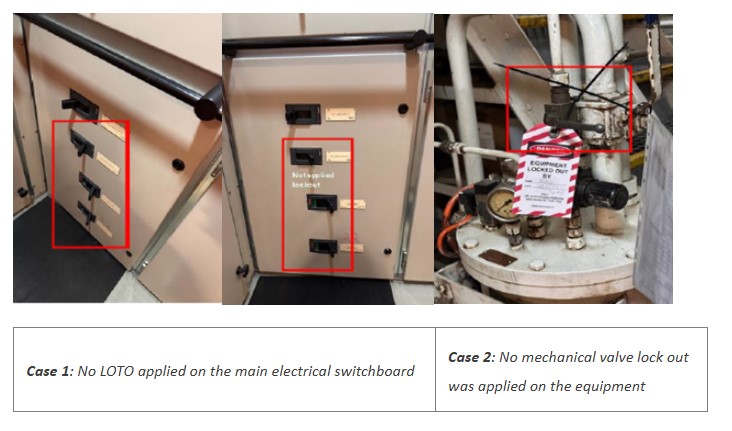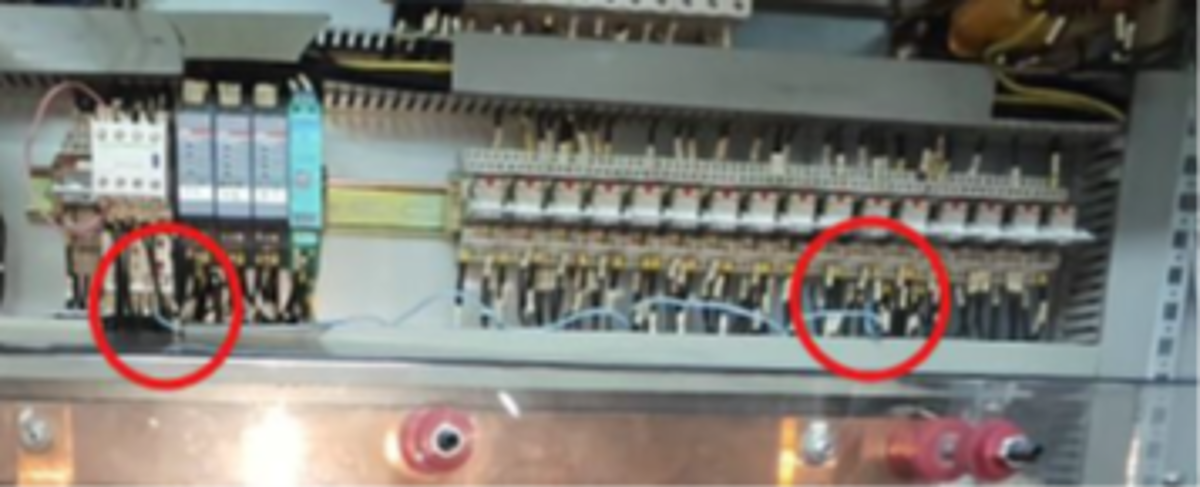IMCA draws lessons learned from two incidents related to poor energy isolation practices on a ship and unauthorized electrical modifications.
What happened (1) – incorrect LOTO standards applied in engine room
During a walkaround audit of a vessel engine room, problems were observed with the Lock Out/Tag Out (LOTO) process, it was observed that electrical equipment was switched off, but LOTO was not applied in place. Also, for the mechanical isolation, the locking device was not in place, though the mechanical valve was closed and tagged out.

What went wrong
- Case 1: Lock Out/Tag Out (LOTO) was not applied on the electrical switchboard by ETO during repair of AHT hydraulic pipeline. Though the main switchboard was switched off and emergency release button was activated from the bridge;
- Case 2: Valve lock out (mechanical isolation) was not applied on the hydraulic pipe, though the valve was physically closed, and isolation tag was applied on the valve;
- Lack of Control of Work and Isolation process onboard- the correct isolation process was not applied by the responsible personnel;
- A suitable LOTO device was not available onboard for the electrical isolation points on the main switchboard for AHT hydraulic pipeline, although a previously email instruction had been sent to all fleet vessels to ensure sufficient LOTO devices were available onboard.
Lessons learned:
- Simply switching off a circuit or closing a valve does not guarantee complete isolation – unexpected reactivation can occur due to system malfunctions, human error, or mistaken assumptions. A proper LOTO process ensures that energy sources remain isolated until the work is completed and verified safe for reactivation;
- LOTO should be fully implemented for all maintenance tasks- Every maintenance or repair activity involving hazardous energy should follow a thorough LOTO procedure, regardless of the presence of physical barriers like switch-offs or valve closures. The absence of LOTO devices or failure to apply them properly can lead to severe injuries, equipment damage, or even fatalities.
- Ensuring availability of suitable LOTO devices onboard – the absence of an appropriate LOTO device for the main switchboard highlighted a critical gap in safety preparedness. Proactively verify that all necessary LOTO devices are onboard and suitable for all potential isolation points.
What happened (2) – Unauthorized electrical disconnections and bypasses
Unauthorized and undocumented disconnections and bypassing of critical electrical systems were observed. Such actions pose significant safety risks and can compromise the integrity of onboard operations.
- Improper reconnections may lead to major equipment damage, including short circuits, power fluctuations, or failures in essential onboard systems.
- Unauthorized disconnections or bypassing of critical electrical systems can expose personnel to serious electrocution hazards, especially if they unknowingly interact with live circuits.

Why did it happen?
It was assumed that these disconnections or bypasses may have occurred during Dynamic Positioning (DP) trials, where certain critical electrical systems might have been temporarily modified to facilitate testing or troubleshooting. There was:
- A lack of proper documentation – no clear records or logs of temporary modifications.
- A failure to follow reinstatement procedures – crew members may not have been assigned or reminded to restore the system.
- Miscommunication between teams – Shift changes or multiple personnel handling DP trials may have led to assumptions that another party would restore the system.
- Absence of verification checks – no structured post-trial review to ensure all systems were returned to normal.
Lessons learned:
- Importance of proper documentation and approval: temporary disconnections or bypassing of critical systems should be fully documented and approved by relevant authorities before work starts.
- Ensure – double check, verify – that all temporarily altered systems are returned to their original state after trials or maintenance.
- Importance of clear communications particularly at handover: shift changes or team transitions should include detailed briefings on any modifications made, including what needs to be restored.































































